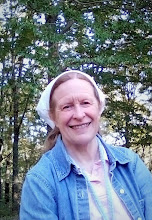Although I don't share the alarmist tendencies of many people in the heirloom seed industry (several of whom aren't slow to tell you that we're doomed if we don't preserve old vegetable varieties), I do share their enthusiasm for preserving a wide and rich vegetable and flower heritage.
I'm also a great fan of commercial seed companies that have managed to develop plants that do well under a variety of conditions and/or that hold up well for shipment to distant markets.
And, no, I don't see a contradiction there. I think we need good commercial varieties, and I think we're far better off in both the long and short terms if we have great regional or niche varieties, too. I think we're better off from a safety standpoint if we don't become overly reliant on too few varieties or depend too much on a just a handful of seed sources. I know we're better off from the standpoints of taste and beauty and experience if we don't let our food and surroundings become too much of a sameness, so to speak.
All of which is prelude to saying that I am having a wonderful time reading the Seed Savers 2007 Catalog which came in the mail. I think my favorite info snippet this year so far is "Found growing in a street crack at 56th and College in Indianapolis, Indiana. First offered by SSE member John Hartman."
Oh, wait... you didn't think you had to be some sort of specialist or have membership in some sort of fraternity to help save and share great and/or interesting flowers and vegetables with the rest of the world, did you? You thought you had to have a horde of seeds from plants originally brought to America by your great-great-great-grandparents and zealously cultivated by your family ever since?
Think again. Those who stumble across plants worth propagating also play their part. The catalog is full of stories like that. Found in a market in Russia (or India, or wherever). Found growing at an abandoned farm. That sort of thing.
This is, as I understand it, in keeping with how many of the world's best loved flowers and food crops got established. Someone found them somewhere, and took them somewhere else where they might be appreciated or studied or improved. I have books on my bookshelf featuring stories of men risking their lives to acquire exotic plant specimens to take to collectors in fad-hungry Europe, for instance. More on that someday, when I've got more time.
For now, though, I just wanted to alert you to the catalog before too many of the offerings sell out.
Well, that, and I want to publicly thank those families that have quietly and patiently and doggedly saved the vegetables and flowers grown by their ancestors instead of letting them be lost to us. I haven't learned the art of saving seeds properly. But I admire those who have.
A note: Introducing plants from one part of the world to another has been known to unleash some awful pests in the new place. (Some parts of Oregon, Washington and California are horribly infested with Scotch broom, for instance, to the detriment of practically everything else in the vicinity.) Please, please, exercise some caution and common sense when importing plants, and keep an eye out for anything that unexpectedly looks to be on the verge of rampaging off your place. Thanks. I feel pretty safe promoting the Seed Savers stuff, because most of what they offer requires cultivation to survive, but, still, do keep an eye out, won't you?
P.S. The Seed Savers catalog also features a selection of books that's well worth a look.
Marge’s Diner by Gail Gibbons
-
Gail Gibbons has written and illustrated a multitude of nonfiction picture
books about everything from road building to quilting bees to spiders,
penguins,...
5 weeks ago

2 comments:
arrghhhh...scotch broom is all over my property. ugly, vicious things...
:) I am knee-deep in seed catalogs myself. sigh...heaven!
Tonia, I feel for you. We've dodged Scotch broom so far over here, but I've driven by places west of here that are strangled by it. I understand it's a horrid fire hazard, too? :p
Best of luck with your battles with it.
I love seed catalogs. I live in a house that sits on land reclaimed from gold dredging, and so my options are limited on what I can actually grow (right now I have to concentrate on developing better soil) but I do love to play with ideas about what I might try to grow this year. I've already got seed packets on the dining room table, bought at an early bird sale last week. But of course I'm not done yet. I dream more than buy, of course, but isn't that half the fun? :)
Post a Comment